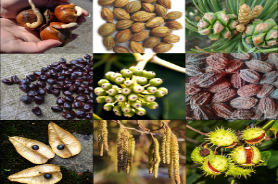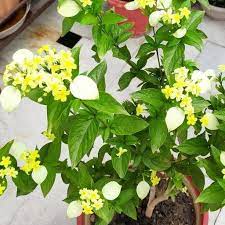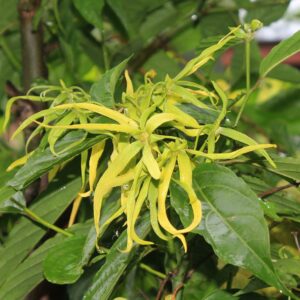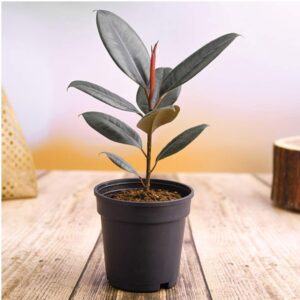Here is some detailed information about the Mussandra plant:
- Description: Mussandra plants are generally evergreen shrubs or small trees. The size can vary depending on the species and growing conditions, ranging from around 1 to 6 meters (3 to 20 feet) in height. They have opposite, simple leaves that are leathery and glossy in texture. The leaves are typically lanceolate or elliptic in shape, with prominent veins. Mussandra species are known for their attractive foliage.
- Flowers: The flowers of Mussandra plants are a notable feature. They are small and typically arranged in clusters or panicles. The flower color can vary between species and cultivars, including shades of white, yellow, green, or cream. The flowers are often fragrant, emitting a pleasant scent. The blooming period can vary depending on the species, but generally, they produce flowers during the warm months.
- Fruit: After flowering, Mussandra plants may produce small fruits. The fruits are typically small capsules or berries that contain seeds. The appearance and color of the fruits can vary between species. However, it’s worth noting that the ornamental value of Mussandra plants primarily comes from their foliage and flowers rather than their fruit.
- Cultivation: Mussandra plants are generally grown as ornamental plants in tropical and subtropical regions. They prefer a warm and humid climate and thrive in well-drained soil. They are typically suited for USDA hardiness zones 9 to 11. Mussandra plants prefer partial shade to full sun exposure, depending on the species. Regular watering is important to keep the soil consistently moist but not waterlogged.
- Uses: Mussandra plants are primarily cultivated for their ornamental value. Their attractive foliage and colorful flowers make them suitable for gardens, parks, and landscaping. Some species are also cultivated in botanical gardens or as potted plants. The fragrant flowers can be a delight in outdoor spaces. However, it’s important to note that Mussandra plants are not commonly used for culinary or medicinal purposes.
It’s important to mention that specific care requirements and characteristics can vary between Mussandra species. Therefore, if you have a particular Mussandra species in mind, it would be helpful to provide the specific species name for more accurate and detailed information.















Reviews
There are no reviews yet.